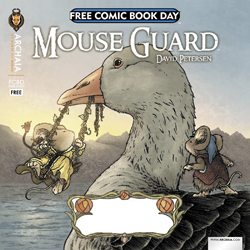

This image was originally posted to Flickr by scogle at http://flickr.com/photos/11371367@N08/1260802219
Part 2: The Philosophy of Chance
For those of you not following this story from the beginning, I recently embarked upon a project to design a Horror-Themed Board Game that I could play with my family. I did some research into just how to do this and found very, very little. Most sites that I looked up simply said, “Come up with an idea, draw/write it out, cut it out, and then glue it all together.” Okay, that might do for folks out in the Catskills (for the record, I have no idea what people or life is like out in the Catskills), but I’ve been gaming since the Carter administration and I was looking for something a little more sophisticated. So, I went rogue… Well, the geek’s version of rogue: DIY.
[For the first part of this project, see How To Make Your Own Horror Board Game (Part 1)]
So, sat down to make some notes. What did I want in the game? Vampires? Check. Werewolves? Check. Terribly clever humans trying to survive despite the presence of the first two? Check. Obviously combat is going to be a big part of this. But what is combat in terms of basic numerical game mechanics? Combat is one or more contested die rolls. Two or more parties wind up going at it, and one or more of them roll dice to determine the outcome. So that each one of these contests is not complete chance, you allow both parties opportunities during the course of the game chances to legally “stack the dice” in their own favor. They are allowed to pick up weapons or equipment or in some way make alterations to their character so that their chance of succeeding is increased. It was at this point that I realized I had stumbled upon one of the most crucial decisions of the game: would my game’s rules allow players to stack the dice so much that they could have a contest wherein they could not win or lose?
Let’s say every character in the game has a “Combat” statistic. Each party in a combat rolls a die, adds that to their Combat rating, and whoever winds up with the higher number wins the combat (and yes, just one die roll to settle the combat because I’m keeping it simple for the kids). So if you have a Combat of three and I have a Combat of three, it’s even money. I’m just as likely to win as to lose. But what if I have a Combat of seven and you have a combat of one? There’s no point in rolling the dice. The best you can roll is a six on your die giving you a seven, and the worst I can do is a one giving me an eight. There’s no way you can win. This is a situation familiar to most gamers. Most game systems either accept this, or write additional rules for always fail or always win circumstances. A good example of this from the role-playing game world is Runequest (disclaimer: I’m not familiar with current RQ rules, only the second and third editions as published by Chaosium). In Runequest, all skill and combat rolls are done on a D100 roll. Rolling an 01 to 05 is always a success and a 96 to 00 always fails. So, even a kid picking up a sword for the first time can conceivably hit Conan with it, and Conan could conceivably fumble his parry. The smart money is still on the Cimmerian.
So this is one of the fundamental dichotomies I was looking for when researching how to make a game in the first place. Should my system allow players to legally “stack the dice” to the point where you can have an utterly certain outcome, or should the rules contain some sort of “no matter what” clause allowing for a certain amount of chance for failure or success no matter what? Once again the internet was silent. (Curse you, internet, whose mocking silence leaves me cold and alone with only existential doubt as a companion.)
So here are the pros and cons as I seem them.
“Stack the Dice”
Pros: Players get a sense of accomplishment. They can effectively earn invincibility. It teaches the value of good strategy.
Cons: Younger kids who have a harder time with strategy get stuck with a sense of hopelessness and powerlessness early on and may give up playing.
“No Matter What”
Pros: Keeps the game a little more wild and unpredictable. The smart money is still on the Conans, but you still don’t know exactly how things are going to go as much. Discourages without prohibiting players from finding loopholes in the rules to making combat monsters which steam-roll over the whole game.
Cons: Younger kids can sometimes cling to a slim chance as if it were a certainty, not realizing just how slim their chances are.
My final decision has been to go with a “No Matter What” game. I think it’s the best way to keep people interested in playing. At this point I’m thinking that all of the die rolls will be on two or three six-sided dice, and that the lowest and highest possible numbers will be always success/fail conditions. And of course, there’s always play-testing to expose any mistakes I’m making.


